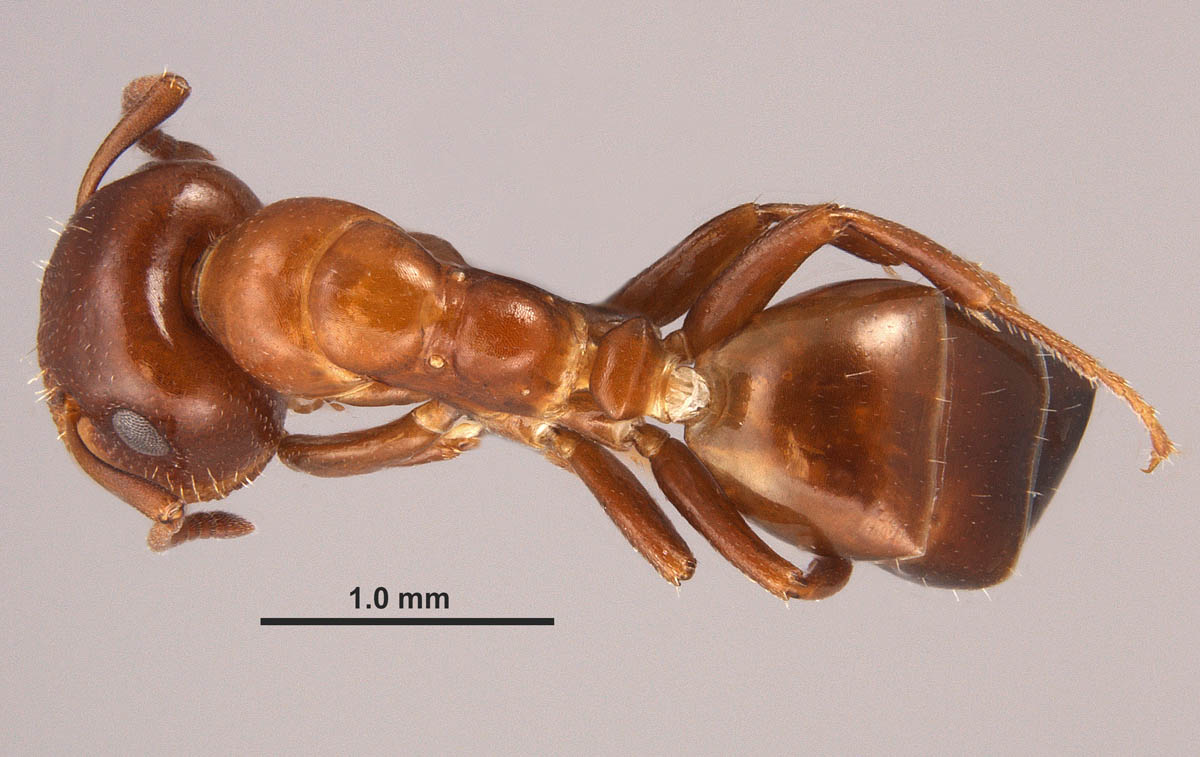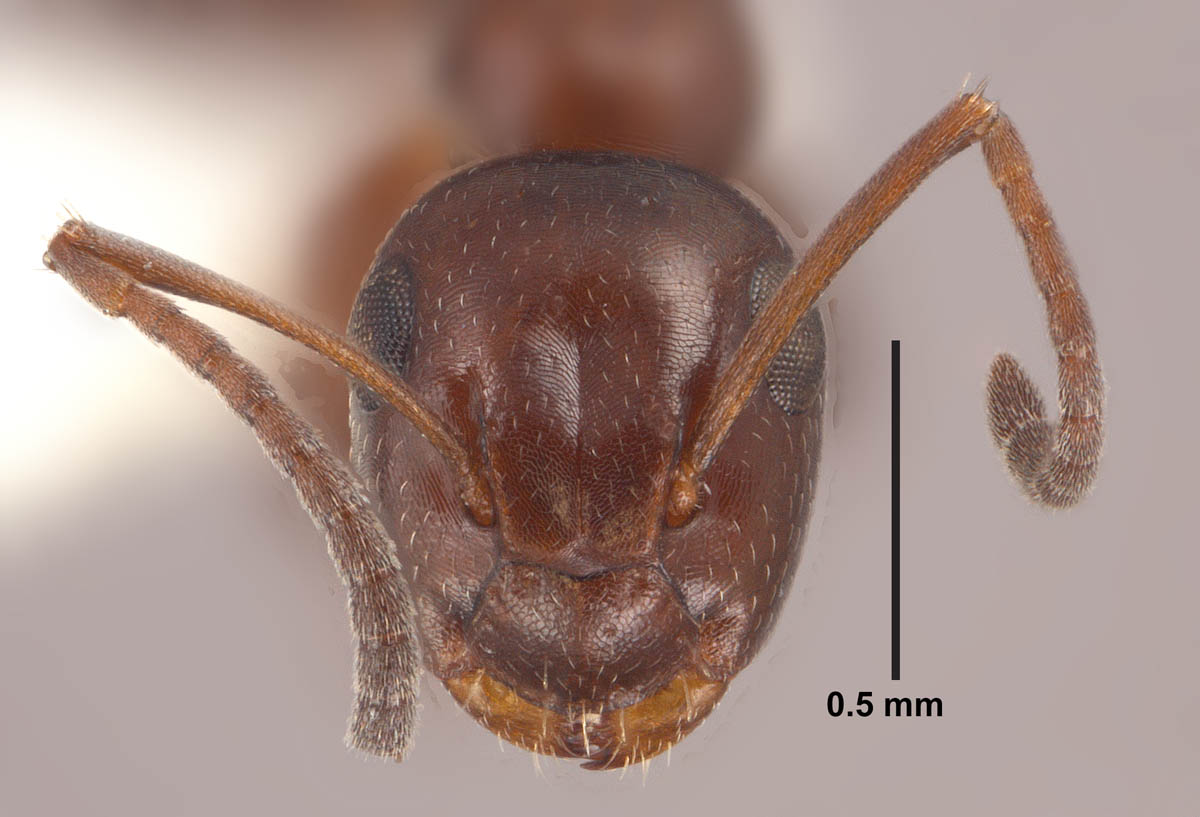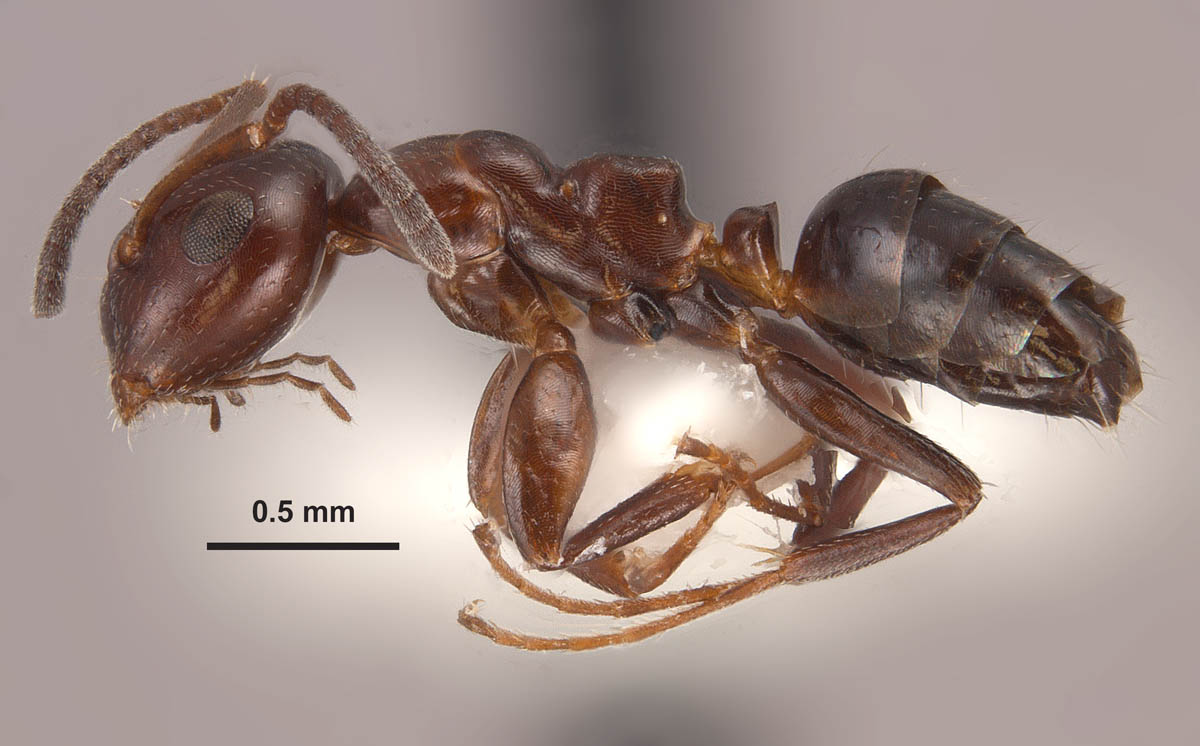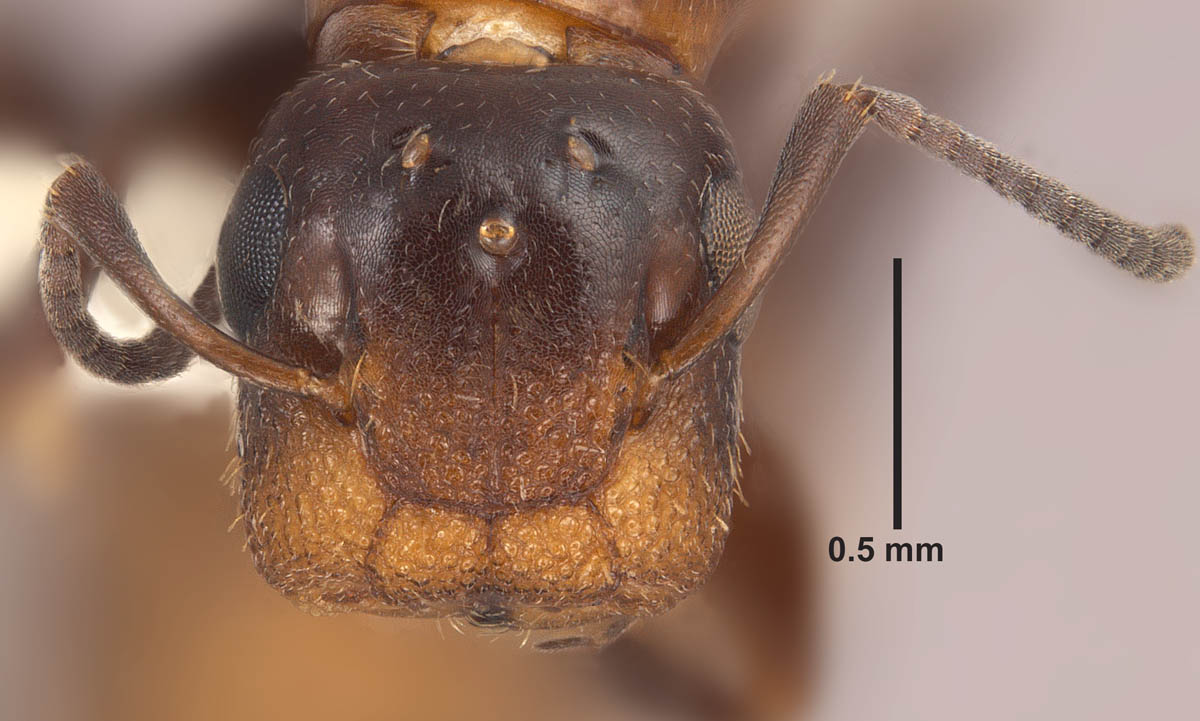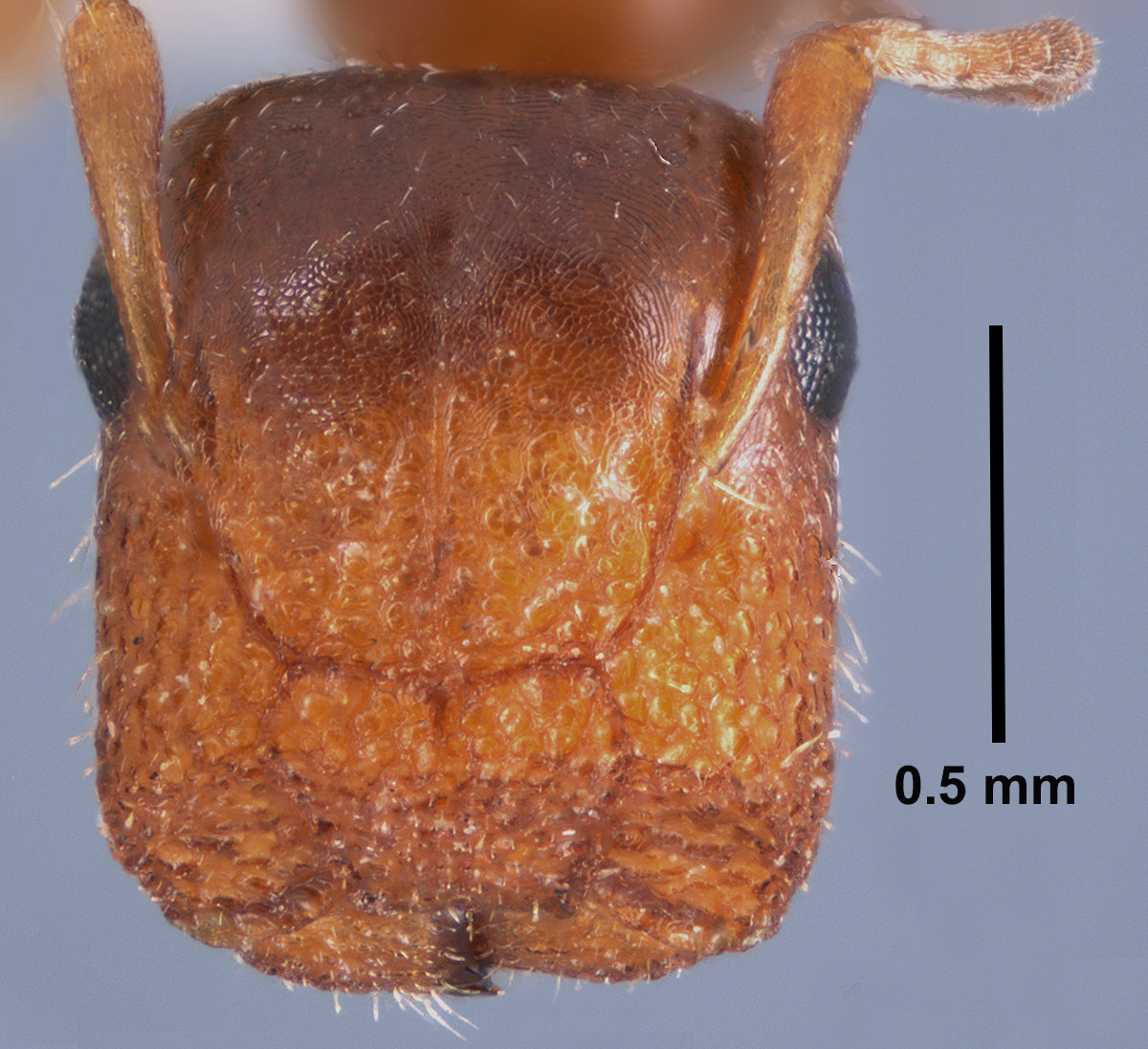Subfamily FORMICINAE Author: Joe A. MacGown |
||
Colobopsis impressa, full face view of a major worker (FL, Orange Co.), (photo by Joe A. MacGown) |
Colobopsis impressa, lateral view of a major worker (FL, Orange Co.), (photo by Joe A. MacGown) |
Colobopsis impressa, dorsal view of a major worker (FL, Orange Co.), (photo by Joe A. MacGown) |
Colobopsis impressa, full face view of a minor worker (FL, Orange Co.), (photo by Joe A. MacGown) |
Colobopsis impressa, lateral view of a minor worker (FL, Orange Co.), (photo by Joe A. MacGown) |
Colobopsis impressa, dorsal view of a minor worker (FL, Orange Co.), (photo by Joe A. MacGown) |
Colobopsis impressa, full face view of a queen (MS, Oktibbeha Co.), (photo by Joe A. MacGown) |
Colobopsis impressa, lateral view of a queen (MS, Oktibbeha Co.), (photo by Joe A. MacGown) |
Colobopsis impressa, dorsal view of a queen (MS, Oktibbeha Co.), (photo by Joe A. MacGown) |
Colobopsis impressa, frontal view of the head of a major worker (photo by Joe A. MacGown) |
Colobopsis impressa, angled view of the head of a major worker (photo by Joe A. MacGown) |
Colobopsis impressa, angled view of the head of a major worker (photo by Joe A. MacGown) |
Members of the genus Colobopsis can be recognized by the unusual modifications of the heads of both the major workers and queens which are severely truncated in the anterior third. This phragmotic condition enables the major workers to serve as living doors to their nests which are in living or dead twigs, stems, and some galls. Colobopsis impressa can be distinguished from our other two species in this region by metanotal suture of both the major and minor being deeply impressed; the propodeum of the majors usually rounded between faces (angulate in minors); and the angle of truncation of head of major and queen rounded to slightly serrate. In C. mississippiensis and C. obliqua, the metanotal suture of the majors and minors is only shallowly impressed and the propodeum of both majors and minors are angulate between faces. In C. mississippiensis, the angle where the truncation of the head occurs is very sharp with a pronounced rim or flange present and sculpture on the truncated face is very shallow and fine and somewhat shining in overall appearance. C. obliqua has a somewhat serrate, but distinct, ridge separating the truncated portion of the head with the rest of the head. The reticulations of C. obliqua are much larger and more numerous than in C. impressa. In addition, there are many more erect hairs present on the posterior region of the head C. obliqua majors than in C. impressa. Historically, this species has been confused with C. pylartes fraxinicola, which, according to Bill MacKay (http://www.utep.edu/leb/antgenera.htm), may not be a valid species. At this time I am going along with the idea that we have three species in the southeastern United States: C. impressa, C. mississippiensis, and C. obliqua. In MS, C. impressa has been found nesting in Carya glabra (Mill.) Sweet, Fraxinus americanus L., Solidago spp., and galls produced by the cynipid wasp Callirhytis cornigera (O. S. ) on Quercus falcata Michx. (from Tynes 1964). Tynes, recognized C. pylartes fraxinicola as a distinct species and valid species, however, his records were probably actually C. impressus. He found that species nesting in 21 species of plants in Mississippi including Fraxinus americanus L., Carya illinoensis (Wang.), Carya sp. (hickories), Quercus falcata Michx., Solidago spp., Rhus glabra L., Catalpa speciosa Warder, Berchemia scandens (Hill) K. Koch, Campsis radicans (L.), Sambucus canadensis L., Erianthus ravennae (L.) (plumegrass), Prunus persica (L.) Batsch, Melia azedarach L., Cornus florida L., Crataegus uniflora Meunchh., Ulmus americana L., Smilax sp., Maclura pomifera (Raf.) Schneid., Gleditsia triacanthos L., Vitis labrusca L., and Populus deltoides Marsh (from Tynes 1964). |
||




